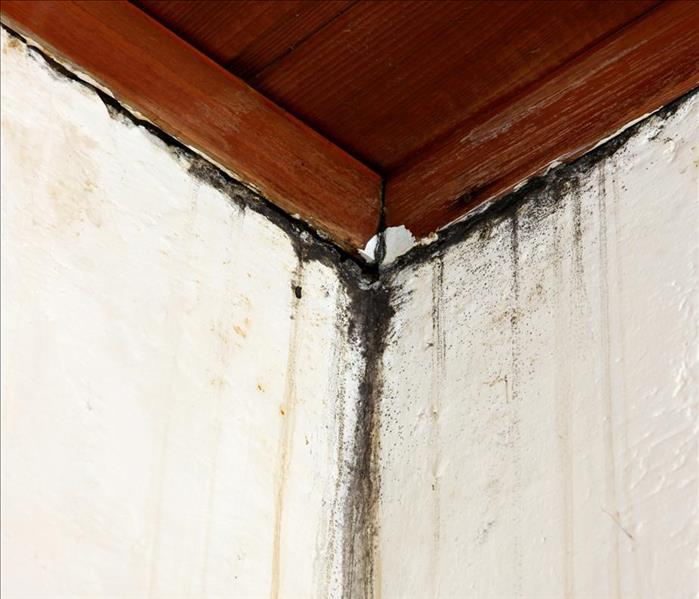Mold Remediation -- Not A DIY Endeavor
7/18/2017 (Permalink)
 Bleach may remove small patches of mold from non-porous surfaces, but it is not considered an effective remediation product for large mold issues.
Bleach may remove small patches of mold from non-porous surfaces, but it is not considered an effective remediation product for large mold issues.
Many homeowners want to handle minor maintenance and damage repair themselves. It is understandable to approach minor problems in this way, as an attempt to save money and limit the amount of time any part of your home is unavailable. However, when your DIY effort is a mold remediation, calling the restoration professionals at SERVPRO will likely prove safer and more cost effective in the long run.
Picture, if you will, a clogged condensate drain line on your home air conditioner that has resulted in gradually saturating an inside wall under a discharge vent, creating a mold damage crisis in your Omaha house (this is a common cause of mold damage in Omaha homes and businesses). The wall was obstructed from your view by curtains and a table pushed under the window, so the mold went undetected until you noticed a musty odor. Tempted to handle the remediation yourself, you discuss it with your spouse and discover a disagreement. Like your spouse, we urge homeowners to consult with one of our mold specialists rather than trying to manage mold because of the complexity and importance of successful remediation.
The lay person often believes a judicious application of diluted chlorine bleach is the answer to a mold infestation. Our highly-trained staff knows differently, based upon advanced classes and certifications in the ways mold spores activate, feed, and grow. SERVPRO remediation teams use the Environmental Protection Agency’s (EPA’s) protocol of containment, removal, and disposal of active colonies, and then disinfection of restorable materials.
After completion of those steps, our SERVPRO crew ensures the source of moisture is eliminated. Mold spores are everywhere, so a firm that makes the dubious claim that it gets rid of mold entirely may be untrustworthy. We understand that the key to limiting mold growth is straightforward, although sometimes a challenge to accomplish. To prevent mold from coming back, the spore count must be held to a minimum, and they cannot be exposed to water, period.
Bleach may remove small patches of mold from non-porous surfaces, but it is not considered an effective remediation product for significant colonies, especially on porous materials. The bleach misconception lies in the chemical composition of liquid bleach and the way it works in that solution. Water composes more than 90 percent of most household bleach products before dilution, and obviously more after mixing. The ionic structure of bleach impedes it from absorbing into porous materials, yet the water in the solution penetrates deeply. Ironically, this feeds the very mold you are trying to destroy. Some antimicrobials do incapacitate the growth of mold even in porous materials, and SERVPRO mold remediators are experts in their use.
Locally Owned Company with National Resources
For effective mold remediation, work with the professionals at SERVPRO of Omaha Northwest. Call for a mold inspection and implementation of and EPA protocol-based plan at (402) 800-2134.
For more information regarding the city of Omaha, click here.

 24/7 Emergency Service
24/7 Emergency Service